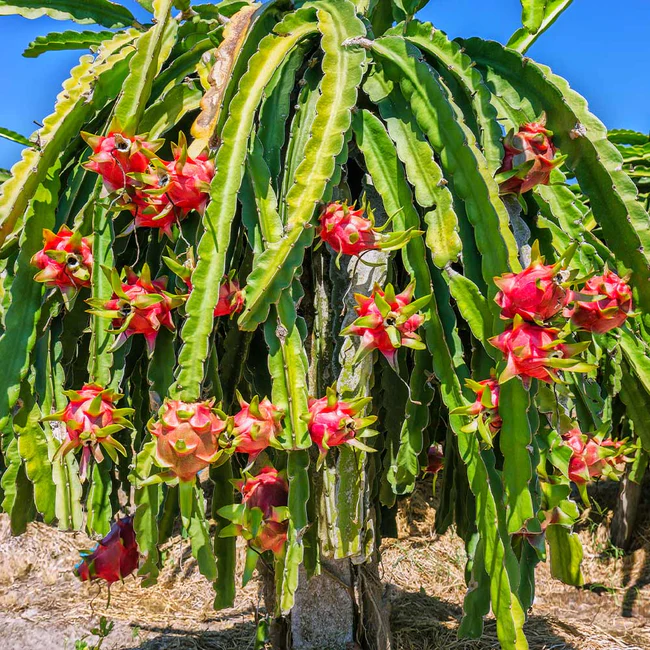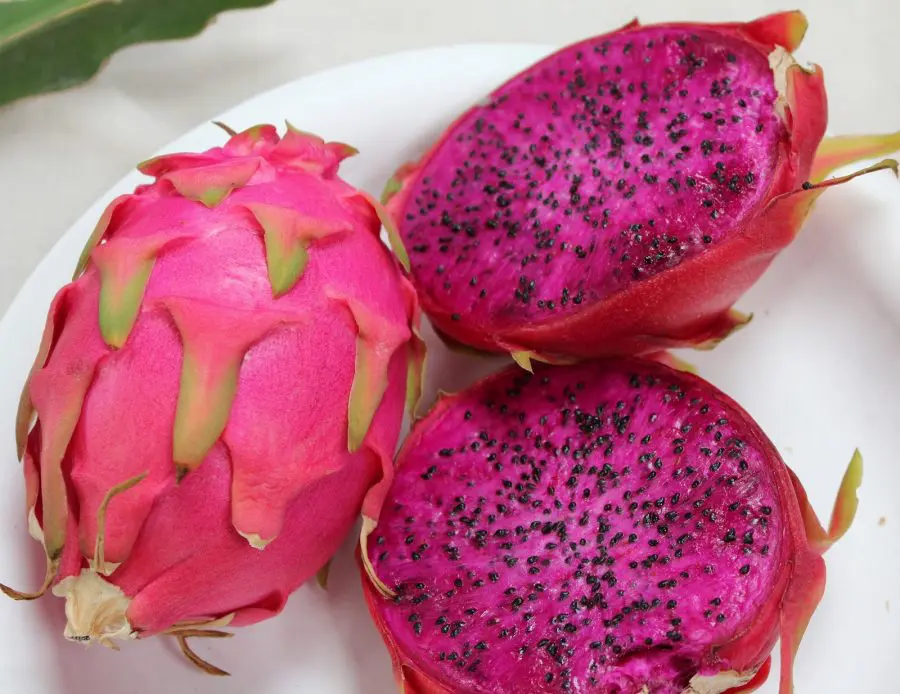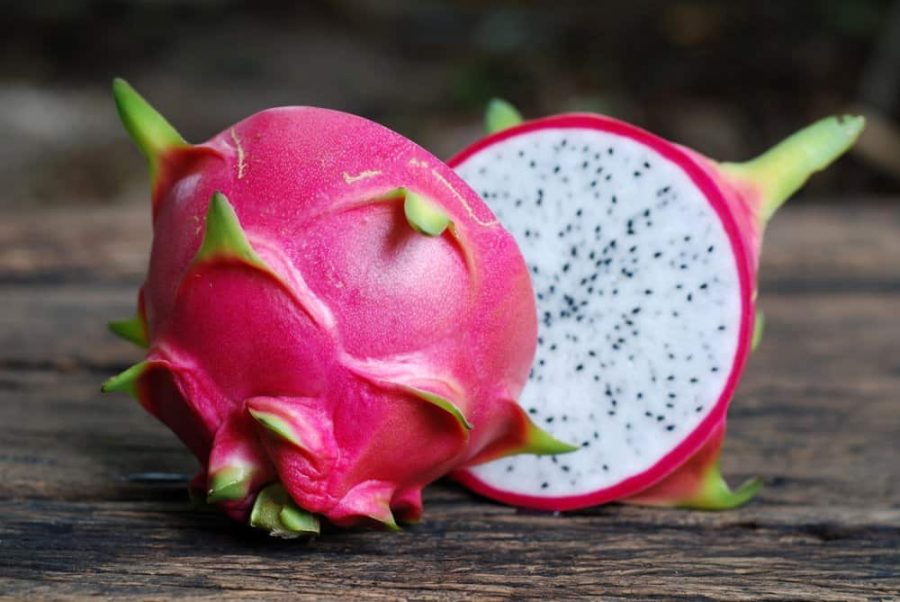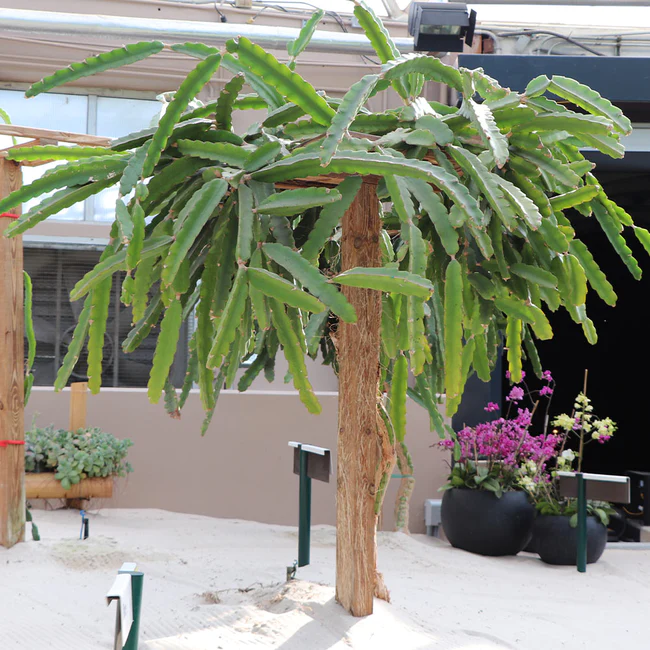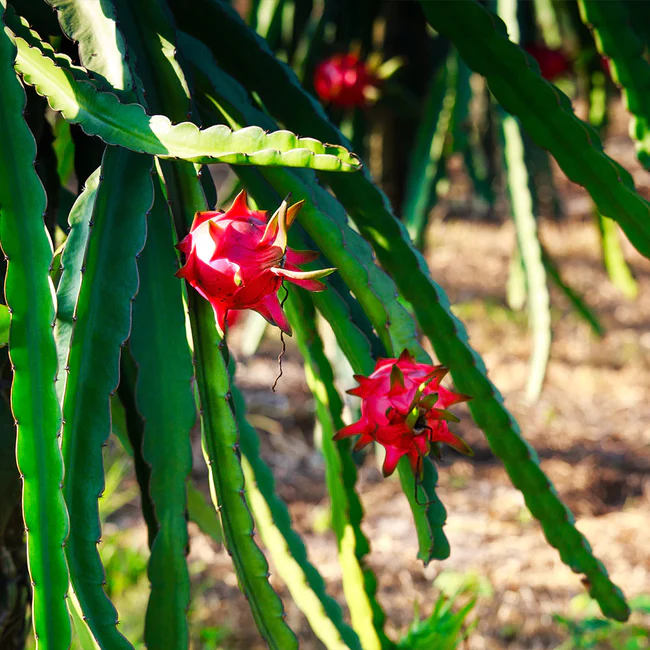This post contains affiliate links. If you buy something from one of our links we may earn a commission. Thanks
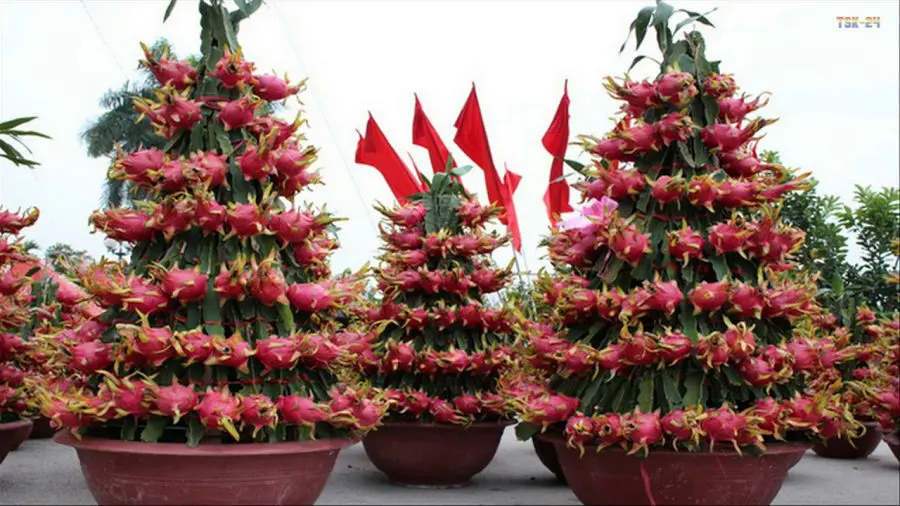
Looking to add a touch of the exotic to your garden? Why not try learning how to dragon fruit?
To grow Dragon Fruit indoors, select a pot that’s at least 12 inches wide and deep, with drainage holes. Fill it with well-draining soil or cactus mix, and place your dragon fruit plant in the center, covering it with more soil.
Water it thoroughly initially, and then let the top 2-3 inches of soil dry out before watering again. Ensure it receives 6-8 hours of sunlight daily.
Fertilize once a month during the growing season with diluted liquid fertilizer. Regular pruning and adequate support will help the plant thrive and eventually bear fruit.
This beautiful cactus-like fruit is becoming more and more popular, and it’s easy to see why.
Dragon fruit can be grown indoors or outdoors, and it’s a prolific producer. We will discuss how to grow dragon fruit indoors.
We will cover everything from planting to harvesting, so you can enjoy this delicious fruit all year round.
Dragon fruit, also known as pitaya, is a delicious exotic fruit that can be enjoyed all year long.
Many readers may be unfamiliar with dragon fruit so we will tell you about its origins, what it tastes like, and even how to eat dragon fruit.
We will go over everything from how to plant the seeds to how to care for your plants.
I will be growing a yellow dragon fruit plant but if you want a red dragon fruit plant you can get it here on Fast Growing Trees.
Amazing Dragon Fruit Video
This video has no words just incredible pictures of dragon fruit being grown. They don’t explain how they do it but this is how I want to grow my dragon fruit. They are dragon fruit master growers for sure.
If you notice most of the plants in this video are in wide shallow containers. I think they plant multiple dragon fruit plants around the edge of the pots.
They are tied together in a teepee shape. I think there is a short stake in the middle of the pot.
It looks like all side branching is pruned off. It might take me a while to get enough cuttings to do this and I am not sure mine will have that much fruit but it’s a goal worth pursuing.
I think this is the best way even if not the easiest way to train them.
Most dragon fruit is grown against a post and branches are allowed to cascade down.
Contrast the growing method in the video above with a more typical form of training.

What Is Dragon Fruit?
Dragon fruit (or pitaya) is a beautiful cactus-like plant that produces edible fruit. It’s native to Mexico and Central America.
But now it can now be found in many tropical and subtropical regions around the world.
Dragon fruit has a unique taste – a combination of sweet and tart – that makes it a great addition to salads, smoothies, or just eaten as is.
Types Of Dragon Fruit Trees:
• Selenicereus megalanthus 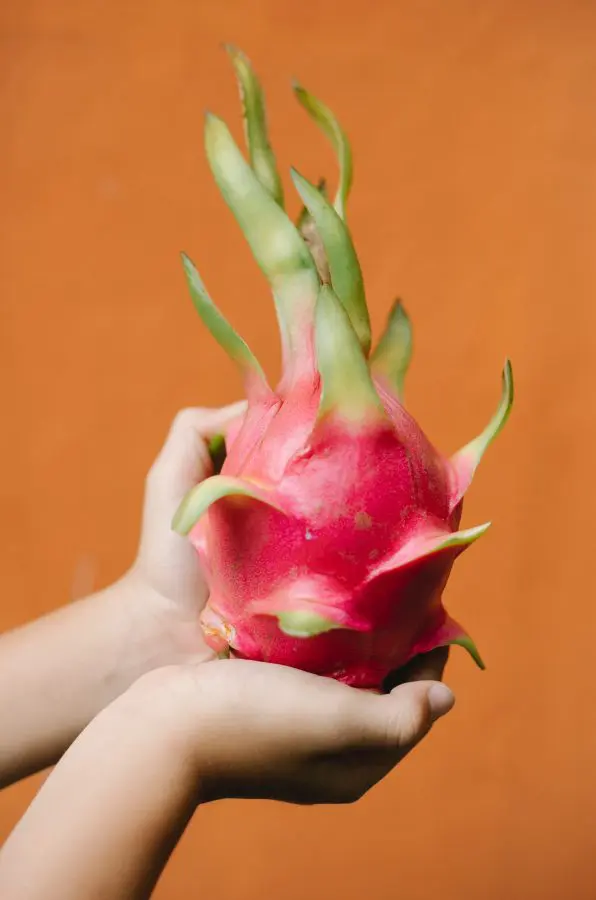
• Hylocereus undatus
• Hylocereus costaricensis
• Hylocereus polyrhizus
• Cereus repandas or columnaris.
I am growing Selenicereus megalanthus AKA Hylocereus megalanthus which makes yellow dragon fruit.
Most dragon fruit is red but I chose the yellow variety because it is self-fertile.
The main pollinators of these plants are moths and bats and there aren’t any in my house.
In addition, although the flowers are the largest of any flowering cactus (as big as your head)
They come out at night and only last for a day so self-fertile sounds like a good trait to have if you want fruit.
Sometimes this plant is called night-blooming cereus. I am expecting my new plant any day now and will make an unboxing video when it arrives.
Selenicereus megalanthus, synonym Hylocereus megalanthus, is a cactus species in the genus Selenicereus that is native to northern South America, where it is known, along with its fruit, by the name of pitahaya. The species is grown commercially for its yellow fruit, but is also an impressive ornamental climbing vine with perhaps the largest flowers of all cacti.
The yellow fruit has thorns, unlike the red dragon fruits (e.g. S. undatus and S. monacanthus), and is commonly known as “yellow dragon fruit”, “yellow pitahaya”, “kirin fruit”, or “yellow pitaya”. https://en.wikipedia.org/wiki/Selenicereus_megalanthus
In the wild dragon fruit cactus grows like a sprawling climbing plant that climbs up things and uses its aerial roots to help do this.
What Does Dragon Fruit Taste Like And How Is It Eaten?
Dragon fruit, also known as pitaya or pitahaya, is a tropical fruit native to Central and South America.
It is oval or oblong in shape and has bright pink or yellow skin. The flesh of the fruit is white, pink, or red and contains small, edible seeds.
Dragon fruit has a sweet and slightly tart flavor. It is often described as having a taste that is similar to a combination of kiwi, pear, and watermelon.
Some say it tastes like a strawberry-pear combination. The texture of the flesh is slightly soft and juicy.
Dragon fruit can be eaten in a variety of ways. It is commonly eaten fresh, either on its own or in fruit salads.
The fruit can also be cut into slices or cubes and added to smoothies or yogurt.
Dragon fruit can also be used as a topping for ice cream, cakes, or other desserts.
In some cultures, dragon fruit is used as an ingredient in savory dishes, such as stir-fries or salsas.
It is important to note that the skin of the dragon fruit is not edible and should be removed before eating the fruit.
The fruit can be cut in half and the flesh scooped out with a spoon, or the skin can be peeled off with a paring knife.
How To Grow Dragon Fruit
How To Grow Dragon Fruit From Seed
If you want to buy seeds they are available on Amazon here. If you have a dragon fruit you can use the seeds inside it.
If you are not having any luck finding dragon fruit at your local grocery store try to find a store that specializes in Asian food.
It is very popular in Asia and they will have it.
How Long Does Dragon Fruit Take To Grow From Seed?
You can grow this plant by buying dragon fruit seeds or using the seeds inside a dragon fruit.
But it can take 5 years before you get any fruit production.
If you get a healthy plant you can have fruit in a year or two.
Seeds can be unreliable and you will get your best results by buying a potted plant and transplanting and repotting it.
Get a red dragon fruit plant here.
How to Grow Dragon Fruit Plants Indoors
As I said I am growing yellow dragon fruit because it is self-fertile.
1. Choose a pot or container that is at least 12 inches wide and 12 inches deep. Use a pot with drainage holes.
2. Fill the pot with a good quality potting mix that drains well making sure to moisten it before planting.
You can use a cactus mix or potting soil mixed with added perlite. I will be using coco coir to grow mine.
3. Place the dragon fruit plant in the center of the pot and fill in all around it with more potting mix
4. Water thoroughly, making sure to wet all of the soil, and then allow the top 2-3 inches to dry out before watering again.
If you’re not sure the best option is to err on the side of caution. It’s better to give it too little water than too much.
Even though it is a cactus it likes moist soil but you don’t want to give it too much water as that can cause root rot.
5. Fertilize once a month during spring and summer using a liquid fertilizer diluted to half strength.
6. Make sure your dragon fruit plant gets plenty of direct sunlight – at least 6-8 hours per day.
Now that you know how to grow dragon fruit indoors, what are you waiting for? Start planting today, and enjoy delicious dragon fruit all year round.
Just remember to give your plants enough water and sunlight, and they will reward you with plenty of tasty fruits come harvest time. Happy growing.
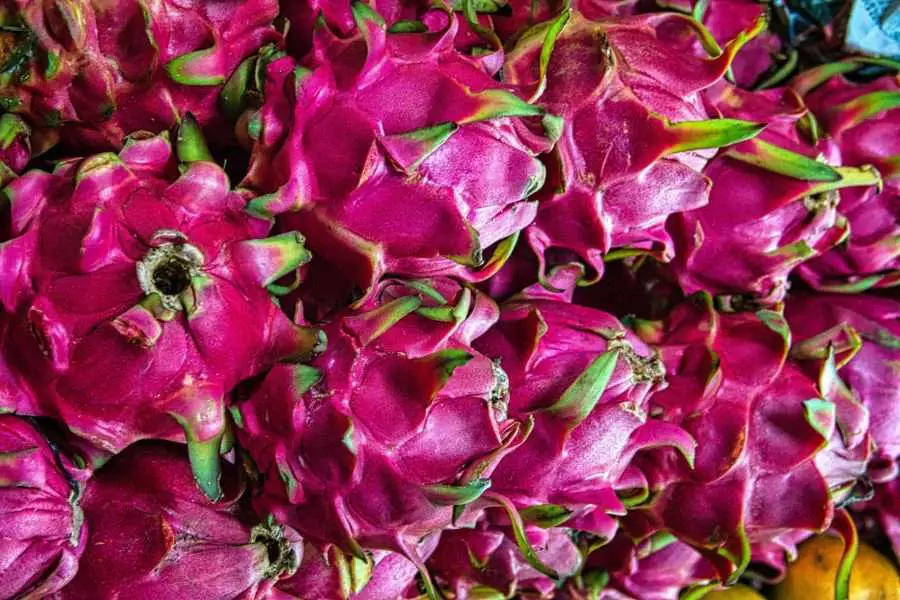
What Are The Lighting Requirements For Dragon Fruit To Bear Fruit?
Dragon fruit, also known as pitaya or pitahaya, is a tropical plant that requires a warm and sunny climate to thrive.
The plant requires a minimum of six hours of direct sunlight per day in order to produce fruit.
In areas with less sunlight, dragon fruit plants may still produce fruit, but the yield may be lower.
Dragon fruit plants can also be grown indoors in a sunny location, such as a south-facing window.
In this case, it is important to provide the plant with enough artificial light to meet its needs.
Dragon fruit plants require a full spectrum of light, including ultraviolet (UV) and infrared (IR) wavelengths.
This can be provided by using a combination of natural sunlight and grow lights.
In addition to providing adequate light, it is also important to ensure that the dragon fruit plant is getting the right amount of water and nutrients.
The plant should be watered regularly, but the soil should not be allowed to become waterlogged.
Fertilizing the plant with a balanced fertilizer can help to ensure that it is getting the nutrients it needs to produce healthy fruit.
What Day Length Is Needed For Dragon Fruit To Flower?
Dragon fruit, also known as pitaya or pitahaya, is a tropical plant that requires a specific day length in order to flower and produce fruit.
The plant is sensitive to the length of the day, and the timing of flowering can be influenced by the amount of sunlight it receives.
In general, dragon fruit plants require a minimum of six hours of direct sunlight per day in order to flower and produce fruit.
Some varieties of dragon fruit may require longer days or shorter days in order to flower.
In general, dragon fruit plants that are grown in areas with long days (more than 12 hours of sunlight per day) may flower more quickly and produce more fruit than those grown in areas with shorter days.
It is important to note that the timing of flowering in dragon fruit plants can also be affected by other factors, such as temperature, humidity, and the presence of pests or diseases.
Proper care and maintenance of the plant can help to ensure that it flowers and produces fruit as expected.
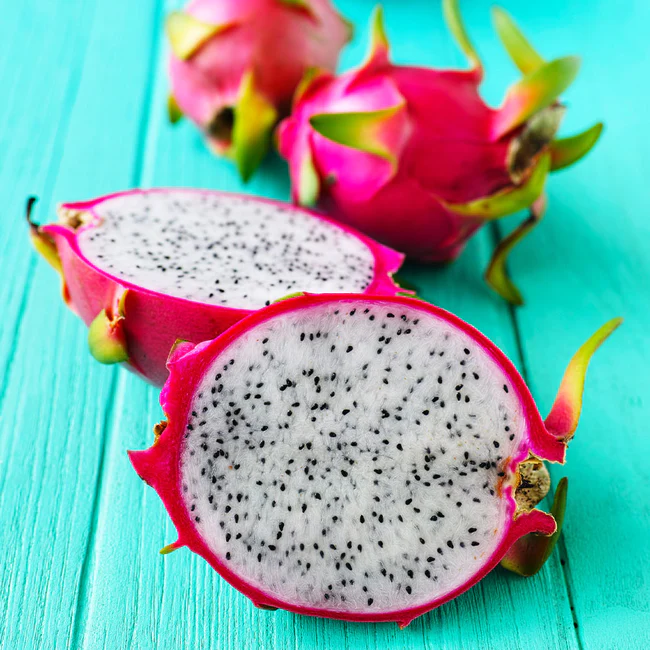
Propagating Dragon Fruit
This plant is very easy to propagate. Save your dragon fruit cuttings left after pruning your plant. Since it is a fast grower you should have plenty of prunings.
Here’s how to grow dragon fruit cuttings:
Dragon Fruit Cactus Care And Growing Tips
Dragon fruit cacti are becoming an incredibly popular houseplant, and with good reason. They’re easy to care for and make a great conversation piece in any room and they produce tasty fruit.
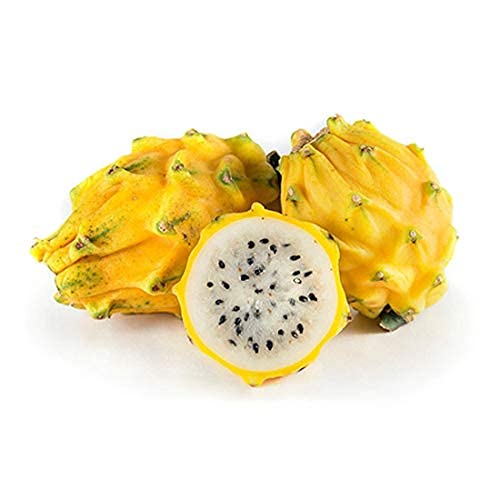
If you’re thinking about growing dragon fruit indoors, here are some tips to make sure you get off to the best start possible:
How To Grow Dragon Fruit In Pots
1. Plant your dragon fruit cactus in a pot that is deep enough for its root system to spread out. Use a well-draining soil mix that has perlite or pumice added in for extra drainage. Don’t let the soil become too soggy since this can cause root rot.
2. Place your dragon fruit in bright sunlight, near a window preferably facing south or west. You can also use a grow light to supplement the natural sunlight if needed.
3. Water your dragon fruit once per week during the growing season, less when it’s not actively growing in the winter months. Let the top inch or so of soil dry out before watering again.
4. Fertilize your dragon fruit with a balanced 10-10-10 fertilizer every two weeks during its active growth period (spring and summer). Follow the instructions on how much to apply as too much fertilizer can burn the roots and damage new growth.
5. Prune your dragon fruit cactus regularly to encourage healthy new growth and discourage disease or pests from taking hold. Use sharp pruning shears and make clean, angled cuts. Disinfect your shears to prevent spreading bacterial infection because it can be a common problem.
By following these dragon fruit cactus care and growing tips, you’ll be able to successfully grow beautiful dragon fruit indoors. Enjoy your own exotic piece of the tropics.
By following these tips, you can enjoy the beauty of a dragon fruit tree indoors. It may take some time to get established, but the rewards are certainly worth the effort.
Once you have your own dragon fruit tree thriving in your home, you’ll be able to enjoy its vibrant flowers and sweet fruits for years to come.
Growing Outdoors
Dragon fruit plants can be grown outdoors in tropical or subtropical climates. Select a spot that is in full sun and has well-draining soil.
According to the U.S. Department of Agriculture plant hardiness zones, it can be safely grown outdoors in zones 10a through 11.
With protection from freezes, it may be possible to grow them outdoors in USDA zone 9.
This plant can not tolerate frost so most of us will want to grow it indoors but you may be able to grow it outdoors in the summer and move it inside when the weather cools.
Plant your dragon fruit cactus at least 12 inches deep to allow for proper root growth.
Water regularly, but avoid overwatering which can cause root rot. Fertilize while actively growing, using a balanced fertilizer such as 10-10-10.
Prune regularly to remove any dead or diseased branches. With the right conditions and care, you’ll have delicious dragon fruits ready for harvest.
Pruning
Pruning is essential for a healthy dragon fruit tree. Prune to remove any dead or diseased branches and encourage new growth.
Use sharp pruning shears and make clean, angled cuts. Prune in late winter or early spring before the growing season begins.
If your dragon fruit plant gets too large for its pot, you can also repot it into a larger container with fresh soil mix.
The video below shows you how to support dragon fruit plants and how to prune your dragon fruit tree.
Harvesting Dragon Fruit
Dragon fruits are ready to harvest when they turn a deep red color with yellow highlights near the stem end.
Cut off the fruits with sharp scissors, making sure not to damage neighboring branches. Enjoy the sweet-tart flavor of your homegrown dragon fruit.
Dragon fruit bears fruits for five months every year, usually from early summer through mid-fall. It begins flowering in early summer, typically in June, with fruit formation occurring shortly afterward. Dragon fruit flowers are open in the evening and last only one evening. https://homeguides.sfgate.com/long-dragon-fruit-bear-fruit-102059.html
With these tips on how to grow dragon fruit cactus indoors, you’ll be able to enjoy the beauty and flavor of your own dragon fruits.
With proper care and the right climate, these unique plants can produce delicious fruits for years to come.
Dragon fruit, also known as pitahaya, is a tropical fruit that grows on cactus plants. The fruit is typically ready to harvest when it is fully ripe and has a deep, rich color.
In general, dragon fruit will take anywhere from 3 to 6 months to ripen, depending on the variety and growing conditions.
The fruit will start out green and gradually turn pink or red as it ripens. When the fruit is fully ripe, it should be soft to the touch and have a sweet aroma.
To determine if a dragon fruit is ready to harvest, you can gently squeeze the fruit to check for ripeness. If the fruit gives slightly to pressure and feels soft, it is likely ready to be picked.
It’s important to remember that dragon fruit will continue to ripen after it has been picked.
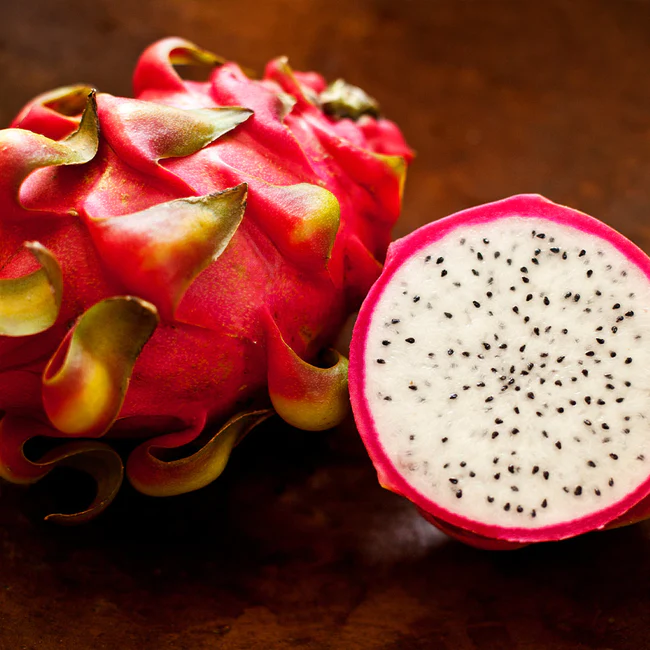
My Yellow Dragon Fruit Plant
Here is my yellow dragon fruit plant. The post office lost my first plant during the Christmas rush but luckily the seller sent a replacement plant.
The weather was really cold and although the plant arrived alive and unfrozen it was definitely set back. I believe the brown at the tip was probably from cold damage.
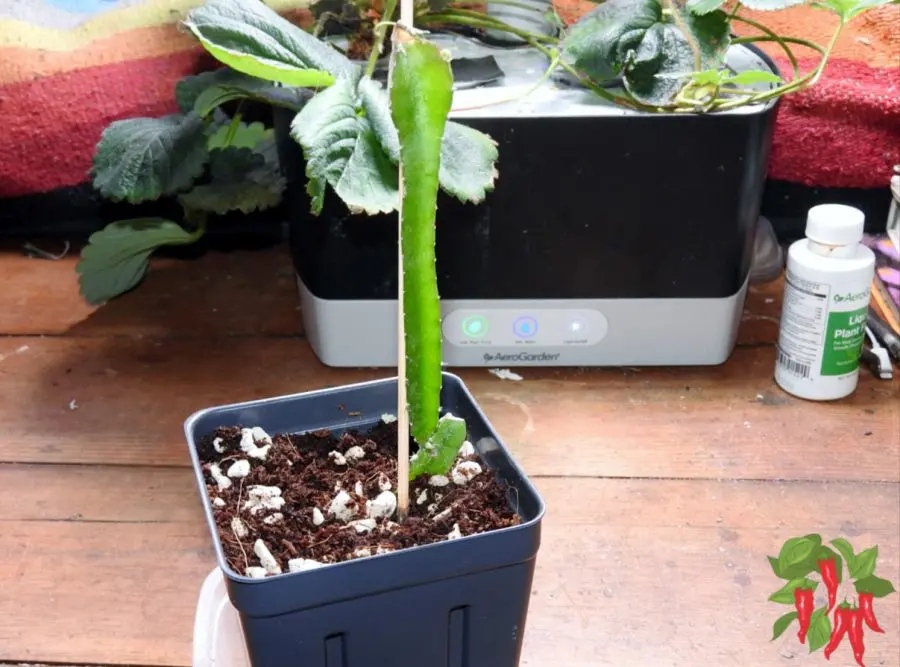
So after about a month, the plant is now showing signs of life. You can see a side bud starting to grow. There is a second bud near the base and it looks like the side buds are waking up too.
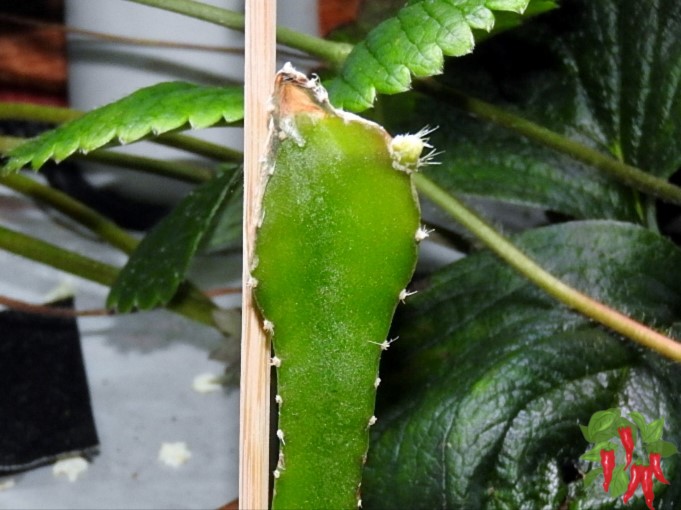
This yellow dragon plant still has quite a ways to go before it is healthy and growing but hopefully, it won’t be long now. I will continue to update its growth.
Propagating Yellow Dragon Fruit Cactus
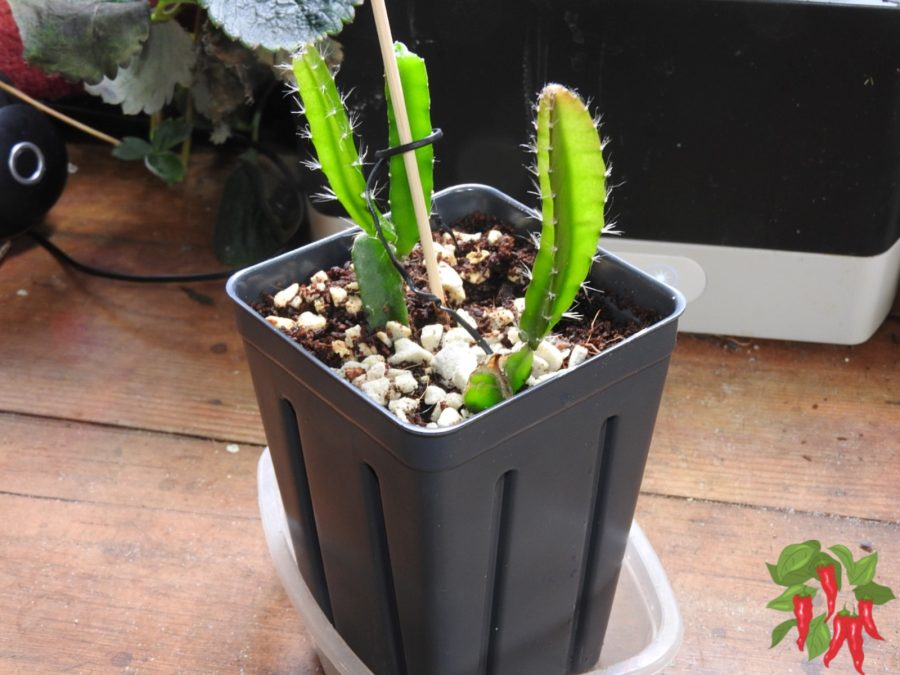
My yellow dragon fruit plant pulled through and I have new growth and it is ready to be propagated. So here’s how I do it.
Yellow Dragon Fruit Update
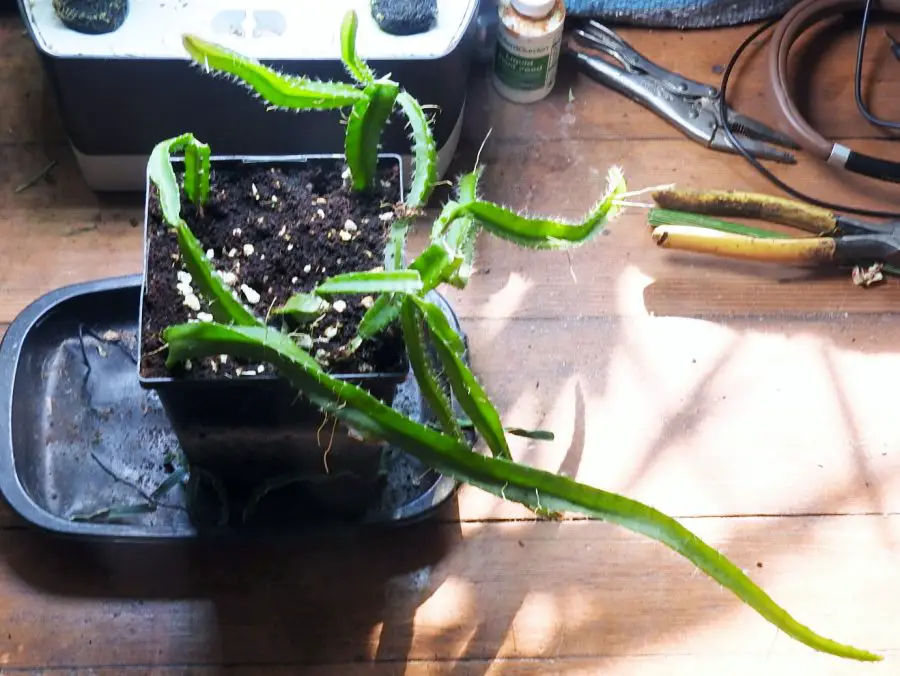
Here is an update on my yellow dragon fruit. I now have 5 plants rooted from my original one.
They are flopping around and they needed to be tied up. So I bought some wood plant stakes and tied them up.
Here they are all tied up. When they get 2-3 feet tall I will start training them on a trellis to support their sidebranching and fruiting.
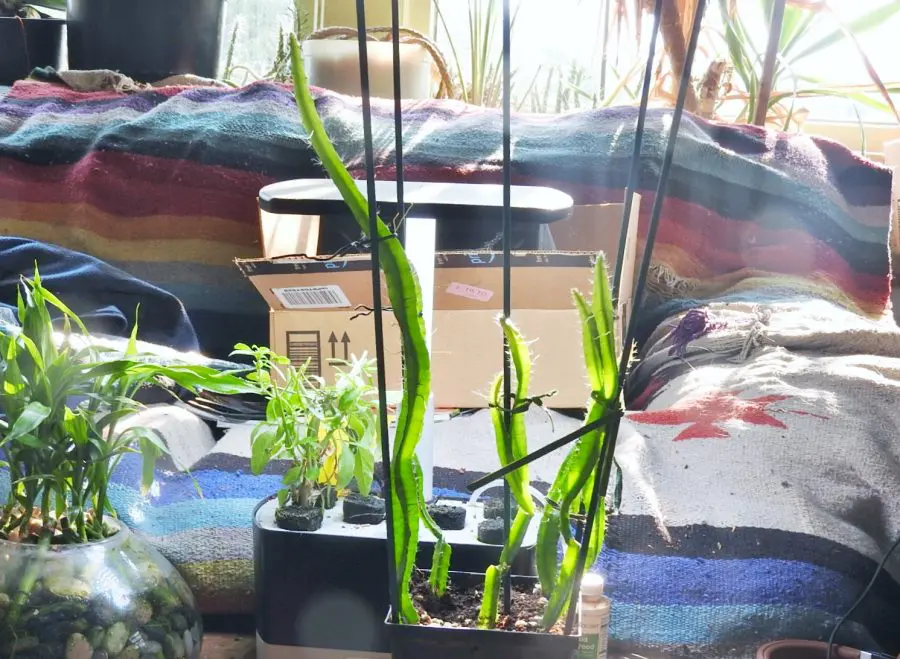
Yellow Dragon Fruit Update Video
Growing Dragon Fruit FAQs
Growing dragon fruit indoors can be a rewarding venture as it not only adds a tropical ambiance but also provides delicious fruit.
It’s a plant that demands a good balance of sunlight, water, and nutrients.
By understanding its growth cycle and requirements, you can easily master the cultivation of dragon fruit in an indoor setting.
Q. What is the ideal soil for growing dragon fruit indoors?
A. A well-draining soil mix is ideal for growing dragon fruit indoors. You can use a cactus mix or regular potting soil mixed with perlite or pumice to enhance drainage. Some growers prefer using coco coir as it retains moisture while still ensuring proper drainage.
Q. How often should I water my indoor dragon fruit plant?
A. Initially, water your dragon fruit plant thoroughly, and then allow the top 2-3 inches of soil to dry out before watering again.
The frequency of watering can be once a week, but it’s essential to adjust based on the moisture level of the soil to prevent root rot.
Q. How much sunlight does a dragon fruit plant need indoors?
A. Dragon fruit plants require a minimum of 6-8 hours of direct sunlight per day.
If natural sunlight is insufficient, supplement it with a full-spectrum grow light to provide the necessary light intensity for growth and fruiting.
Q. When and how should I fertilize my indoor dragon fruit plant?
A. Fertilize your indoor dragon fruit plant once a month during the growing season, typically in spring and summer.
Use a liquid fertilizer diluted to half-strength. A balanced fertilizer with equal parts nitrogen, phosphorus, and potassium (such as a 10-10-10 formula) is generally recommended.
Final Thoughts
Hopefully, you now know how to grow your own dragon fruit. But there are several reasons why you may want to grow dragon fruit indoors.
First, dragon fruit is a tropical plant, so if you live in a colder climate, growing it indoors allows you to enjoy the fruit even if it is not possible to grow it outdoors.
Additionally, growing dragon fruit indoors allows you to have a constant supply of fresh fruit, as the plant can produce fruit year-round with proper care.
Indoor cultivation also allows for more control over the growing environment, which can lead to higher-quality fruit.
Finally, dragon fruit plants can be visually appealing and make a unique addition to any indoor space.
Not sure if growing succulents or cacti is for you? Here are 10 Benefits Of Succulent Plants Indoors.

